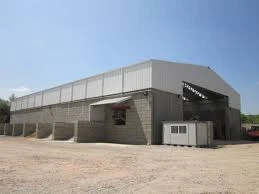- Afrikaans
- Albanian
- Amharic
- Arabic
- Armenian
- Azerbaijani
- Basque
- Belarusian
- Bengali
- Bosnian
- Bulgarian
- Catalan
- Cebuano
- Corsican
- Croatian
- Czech
- Danish
- Dutch
- English
- Esperanto
- Estonian
- Finnish
- French
- Frisian
- Galician
- Georgian
- German
- Greek
- Gujarati
- Haitian Creole
- hausa
- hawaiian
- Hebrew
- Hindi
- Miao
- Hungarian
- Icelandic
- igbo
- Indonesian
- irish
- Italian
- Japanese
- Javanese
- Kannada
- kazakh
- Khmer
- Rwandese
- Korean
- Kurdish
- Kyrgyz
- Lao
- Latin
- Latvian
- Lithuanian
- Luxembourgish
- Macedonian
- Malgashi
- Malay
- Malayalam
- Maltese
- Maori
- Marathi
- Mongolian
- Myanmar
- Nepali
- Norwegian
- Norwegian
- Occitan
- Pashto
- Persian
- Polish
- Portuguese
- Punjabi
- Romanian
- Russian
- Samoan
- Scottish Gaelic
- Serbian
- Sesotho
- Shona
- Sindhi
- Sinhala
- Slovak
- Slovenian
- Somali
- Spanish
- Sundanese
- Swahili
- Swedish
- Tagalog
- Tajik
- Tamil
- Tatar
- Telugu
- Thai
- Turkish
- Turkmen
- Ukrainian
- Urdu
- Uighur
- Uzbek
- Vietnamese
- Welsh
- Bantu
- Yiddish
- Yoruba
- Zulu
Nov . 15, 2024 08:43 Back to list
The Rise of Prefabricated Concrete Structures
In recent years, the construction industry has witnessed a significant shift towards the use of prefabricated concrete structures. Prefabrication, or off-site construction, refers to the practice of manufacturing building components in a factory setting and then transporting them to the construction site for assembly. This innovative approach offers numerous benefits that resonate well with current economic and environmental demands.
One of the primary advantages of prefabricated concrete structures is their ability to streamline the construction process. Traditional construction methods often involve lengthy on-site activities, leading to project delays and increased labor costs. In contrast, prefabrication allows various components such as walls, floors, and roofs to be produced simultaneously, enabling faster assembly on-site. This not only reduces the overall construction timeline but also minimizes disruption in urban areas, making it a preferred choice for projects in densely populated regions.
Moreover, the precision involved in fabricating concrete components in a controlled environment leads to higher quality products. Factory conditions allow for strict quality control, ensuring that each piece meets specific standards before it leaves the production facility. This reduces the chances of defects and the need for rework, ultimately resulting in cost savings for builders and investors alike.
prefabricated concrete structures

Sustainability is another compelling reason for the growing popularity of prefabricated concrete structures. The construction industry has come under scrutiny for its environmental impact, and prefabrication offers a more sustainable alternative. By minimizing waste through efficient design and reducing the amount of raw material required, prefabrication helps to conserve resources. Additionally, many companies are now integrating recycled materials into their concrete mixes and utilizing energy-efficient manufacturing processes, further enhancing the sustainability credentials of prefabricated structures.
Furthermore, prefabricated concrete structures are adaptable and versatile, suitable for various applications ranging from residential buildings to commercial complexes. This adaptability allows architects and builders to explore innovative designs without compromising structural integrity. As urban landscapes evolve and the demand for affordable housing rises, prefabricated options become increasingly attractive.
However, transitioning to prefabricated concrete structures is not without challenges. The initial investment in technology and establishment of efficient production lines can be high. Additionally, transportation logistics may pose difficulties, particularly for large components. Despite these challenges, the long-term benefits often outweigh the initial hurdles.
In conclusion, prefabricated concrete structures represent a forward-thinking approach to modern construction. By improving efficiency, enhancing quality, promoting sustainability, and offering design flexibility, this innovative methodology is poised to reshape the industry. As more builders and developers recognize the value of prefabrication, it is likely that these structures will become an integral part of our built environment in the years to come.
-
How Do Prefabricated Steel Structures Transform Modern Construction?
NewsJul.14,2025
-
How Do Prefabricated Metal Buildings Redefine Modern Construction?
NewsJul.14,2025
-
How Do Prefab Insulated Metal Buildings and Steel Structures Revolutionize Modern Construction?
NewsJul.14,2025
-
How Do Pre - Engineered Steel Structures Redefine Modern Construction?
NewsJul.14,2025
-
Advancing Modular Construction with Prefabricated Metal Structures
NewsJul.14,2025
-
Advancing Industrial Infrastructure with Prefabricated Steel Solutions
NewsJul.14,2025
Products categories
Our Latest News
We have a professional design team and an excellent production and construction team.












